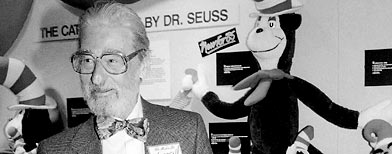
Would Thomas have been nominated to the Supreme Court in today's Internet climate? I doubt it. He's lucky to have a job.
For nearly two decades, Lillian McEwen has been silent -- a part of history, yet absent from it.
When Anita Hill accused Clarence Thomas of sexual harassment during his explosive 1991 Supreme Court confirmation hearing, Thomas vehemently denied the allegations and his handlers cited his steady relationship with another woman in an effort to deflect Hill's allegations.
Lillian McEwen was that woman.
At the time, she was on good terms with Thomas. The former assistant U.S. attorney and Senate Judiciary Committee counsel had dated him for years, even attending a March 1985 White House state dinner as his guest. She had worked on the Hill and was wary of entering the political cauldron of the hearings. She was never asked to testify, as then-Sen. Joe Biden (D-Del.), who headed the committee, limited witnesses to women who had a "professional relationship" with Thomas.
Now, she says that Thomas often said inappropriate things about women he met at work -- and that she could have added her voice to the others, but didn't.
Over the years, reporters and biographers approached her eager to know more about Thomas from women who knew him well. But McEwen remained mum. She said she saw "nothing good" coming out of talking to reporters about Thomas, whom she said she still occasionally met. She did not want to do anything to harm her career, she added. Plus, she realized, "I don't look good in this."
Today, McEwen is 65 and retired from a successful career as a prosecutor, law professor and administrative law judge for federal agencies. She has been twice married and twice divorced, and has a 32-year-old daughter. She lives in a comfortable townhouse in Southwest Washington.
And she is silent no more.
She has written a memoir, which she is now shopping to publishers. News broke that the justice's wife, Virginia Thomas, left a voice mail on Hill's office phone at Brandeis University, seeking an apology -- a request that Hill declined in a statement. After that, McEwen changed her mind and decided to talk about her relationship with Thomas.
"I have nothing to be afraid of," she said, adding that she hopes the attention stokes interest in her manuscript.
To McEwen, Hill's allegations that Thomas had pressed her for dates and made lurid sexual references rang familiar.
"He was always actively watching the women he worked with to see if they could be potential partners," McEwen said matter-of-factly. "It was a hobby of his."
McEwen's connection to Thomas was strictly personal. She had even disclosed that relationship to Biden, who had been her boss years earlier.
In her Senate testimony, Hill, who worked with Thomas at two federal agencies, said that Thomas would make sexual comments to her at work, including references to scenes in hard-core pornographic films.
"If I used that kind of grotesque language with one person, it would seem to me that there would be traces of it throughout the employees who worked closely with me, or the other individuals who heard bits and pieces of it or various levels of it," Thomas responded to the committee.
McEwen scoffs softly when asked about Thomas's indignation, which has barely cooled in the 19 years since the hearings. In his vivid 2007 memoir, the justice calls Hill a tool of liberal activists outraged because he did not fit their idea of what an African American should believe.
McEwen's memoir describes her own "dysfunctional" family in the District and, ultimately, a long legal career. She charts how she developed an "inner self" to escape the chaos of her childhood. Her story also includes explicit details of her relationship with Thomas, which she said included a freewheeling sex life.
Given that history, she said Hill's long-ago description of Thomas's behavior resonated with her.
"He was obsessed with porn," she said of Thomas, who is now 63. "He would talk about what he had seen in magazines and films, if there was something worth noting."
McEwen added that she had no problem with Thomas's interests, although she found pornography to be "boring."
According to McEwen, Thomas would also tell her about women he encountered at work. He was partial to women with large breasts, she said. In an instance at work, Thomas was so impressed that he asked one woman her bra size, McEwen recalled him telling her.
Presented with some of McEwen's assertions, Supreme Court spokeswoman Kathy Arberg said Thomas was unavailable for comment.
However bizarre they may seem, McEwen's recollections resemble accounts shared by other women that swirled around the Thomas confirmation.
Angela Wright, who in 1984 worked as public affairs director at the Equal Employment Opportunity Commission -- which polices sexual harassment claims -- during Thomas's long tenure as chairman, shared similar accounts with Senate investigators.
Once, when walking into an EEOC seminar with Thomas, he asked her, "What size are your breasts?" according to the transcript of her Senate interview.
Her story was corroborated by a former EEOC speechwriter, who told investigators that Wright had become increasingly uneasy around Thomas because of his comments about her appearance.
But Wright also had problems that made committee Democrats nervous. She had been fired by Thomas, and previously by a member of Congress. She also had quit a third job in government, accusing her boss of incompetence and racism.
Concerned about Wright's credibility, Biden lifted a subpoena for her to testify at the hearing. Instead, transcripts of the interviews with Wright and her corroborator were simply entered into the record, drawing only modest press attention.
Another woman, Sukari Hardnett, who worked as a special assistant to Thomas in 1985 and 1986, wrote in a letter to the Judiciary Committee that "If you were young, black, female and reasonably attractive, you knew full well you were being inspected and auditioned as a female" by Thomas.
For his part, a parade of women who worked with Thomas defended him before the Judiciary Committee, calling it impossible that he would engage in the type of inappropriate behavior described by his accusers.
McEwen recalls writing Thomas a short note before the confirmation hearings, curious about what she should say if she were quizzed about their relationship. She said Thomas preferred that she would take "the same attitude of his first wife," who never talked publicly about their relationship.
In 2007, the Howard University Law School graduate retired and grew reflective on her life. Her career had included stints as an administrative law judge for both the Social Security Administration and the Securities and Exchange Commission. She also had turns as a law professor and a private attorney -- all after her work as a federal prosecutor and Senate Judiciary Committee lawyer.
She spends her days in her Southwest townhouse. She frequently meets up with friends for movies, golf and other outings. Regularly, she stops by the National Museum of the American Indian for lunch.
In her short leather jacket, ankle-high boots and leather cap, she looks younger than her age. And when she talks about Thomas, her tone is devoid of rancor. She sees him mainly as someone who occupied a chapter of her life.
Still, McEwen, a Democrat, acknowledges growing increasingly irritated with Thomas's conservative jurisprudence and his penchant for casting himself as a victim in the Hill controversy.
Thomas himself has obliquely referred to the McEwen both in his 2007 memoir and during his confirmation hearing.
In an exchange with Sen. Arlen Specter (Pa.), who was then a Republican, he said there appeared to be tension between Hill and him "as a result of the complexion of the woman I dated and the woman I chose as my chief of staff." Both are light-skinned.
McEwen met Thomas in 1979, when both were among a tiny handful of young, black Capitol Hill staffers. A group of them would hold monthly meetings at neighborhood watering holes, and soon enough McEwen and Thomas had struck up a close friendship.
At the time, Thomas was married to his first wife and working for then-Sen. John Danforth (R-Mo.). McEwen, meanwhile, had recently separated from her first husband.
Over time, she said, Thomas would come by her place for drinks. She said the relationship grew intimate after Thomas left his wife in 1981. She said they broke off their relationship in about 1986.
Through the years, McEwen said, she has remained reasonably friendly with Thomas. On two or three occasions, she said, she brought friends to his Supreme Court chambers where they sat for long conversations.
But now, she says, "I know Clarence would not be happy with me."
"I have no hostility toward him," McEwen said. "It is just that he has manufactured a different reality over time. That's the problem that he has."






 In 1692, Salem, Massachusetts became the setting for a series of trials in which
In 1692, Salem, Massachusetts became the setting for a series of trials in which 













 Glenn Beck says
Glenn Beck says 
 Would Thomas have been nominated to the Supreme Court in today's Internet climate? I doubt it. He's lucky to have a job.
Would Thomas have been nominated to the Supreme Court in today's Internet climate? I doubt it. He's lucky to have a job.


















 Dogs recognize their owner's face
Dogs recognize their owner's face What a fluke! Dolphins learn to 'walk on water'
What a fluke! Dolphins learn to 'walk on water'

